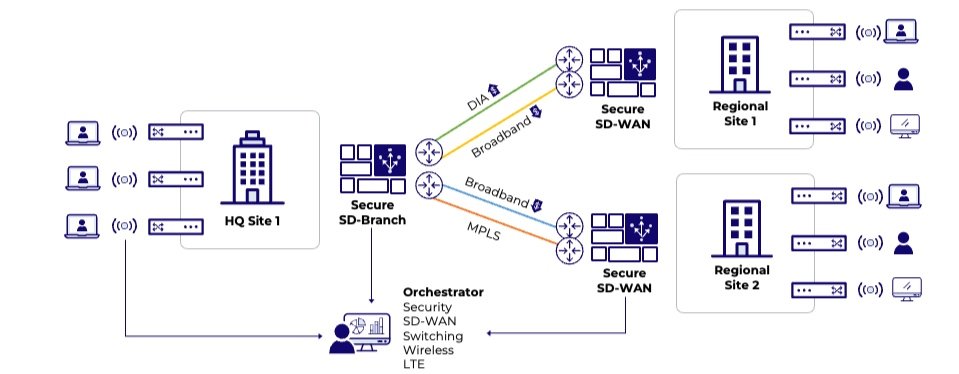Learning Center
The questions that leading CTO’s and CIO’s are asking their IT teams:
How can businesses efficiently transition to an edge-first architecture, and what are the key challenges in this transition?
Implementing an edge-first architecture involves strategically placing computing resources closer to data sources to reduce latency. Challenges include ensuring data security and integrating with existing systems. Let’s talk about SASE. SASE stands for Secure Access Service Edge. It is a network architecture that combines comprehensive WAN capabilities with comprehensive network security functions (such as SWG, CASB, FWaaS, and ZTNA) to support the dynamic secure access needs of organizations. Essentially, SASE converges networking and security into a single, cloud-native service, aiming to offer more flexible, scalable, and secure access for users, regardless of their location.
What are the key considerations for businesses looking to expand their global network capabilities in the context of the trends identified in the report?
Expanding global network capabilities involves ensuring reliable connectivity, compliance with regional regulations, and establishing partnerships for local infrastructure support. Talk to us about our Carrier-neutral solutions. a carrier-neutral network solution guarantees global reach, connecting all your locations seamlessly while offering the flexibility to choose from a diverse pool of carriers, ensuring competitive pricing and top-notch service no matter where you operate. This approach not only streamlines global integration but also significantly boosts efficiency and scalability for businesses expanding worldwide.
What strategies should businesses adopt for network modernization to effectively support emerging technologies and hybrid environments?
Modernizing networks often requires adopting cloud-based services, upgrading legacy systems, and ensuring scalability. It's important to balance cost, performance, and security needs. Let’s talk about how cloud networking may help your business. Cloud Networking refers to the utilization of cloud-based services and resources to manage and deliver network services and capabilities. This approach typically includes delivering networking resources like bandwidth, virtual routers, and firewalls as a service over the internet. It leverages cloud computing environments to ensure scalable, flexible, and on-demand network resource availability. Cloud Networking can improve efficiency, reduce costs, and enhance scalability and accessibility, making it an attractive option for businesses seeking to optimize their network infrastructure with the agility and resource efficiency of cloud technologies.
How can companies ensure robust security while managing data across hybrid and edge environments?
Ensuring security in diverse environments involves implementing robust encryption, access controls, and consistent security policies across all platforms. Let’s discuss SD-WAN. SD-WAN stands for Software-Defined Wide Area Network. It's a technology that uses software to control the connectivity, management, and services between data centers and remote branches or cloud instances. Unlike traditional WANs, SD-WAN offers improved efficiency and performance, particularly in terms of managing multiple types of connections – from MPLS to broadband to LTE. It allows more flexibility, scalability, and control over the network, enabling businesses to route traffic more efficiently and ensure higher levels of performance for critical applications, all while reducing costs and complexity.
What are the best practices for optimizing network infrastructure to support low-latency applications, especially in edge computing?
To support low-latency applications, businesses should focus on network optimization strategies like edge computing, bandwidth management, and prioritizing critical data traffic. Let’s talk about selecting the right network connections to provide the lowest latency. We can also discuss SASE and Cloud Networking.
How are technologies like AI, IoT, and VR/AR impacting network demand, and what steps should be taken to accommodate these changes?
Next-gen technologies increase network demand, requiring higher bandwidth and faster processing speeds. Businesses must plan for scalable network infrastructure to accommodate these demands. We are experts in Next-gen technologies like SD-WAN, SASE and Cloud networking and more importantly how to implement these technologies effectively. Let’s have an in-depth discussion about Next-gen Technologies.




